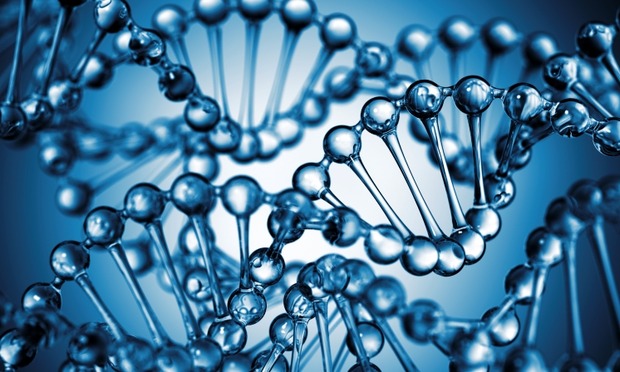The best medicine: modernising drug discovery
24 Oct 2014
Unravelling the mysteries of human biological processes will help us develop medicines that can be tailored to suit an individual’s specific needs.
The process of getting drugs to market is such that more than 90% of new drug candidates never conquer the formidable drug discovery gauntlet.
Fortunately, having such strict processes in place drastically limits the possibility of marketed drugs exhibiting unknown side effects that would, at the very least, severely damage the pharmaceuticals industry.
“One of the most exciting developments at the moment is the computational biological approach to drug discovery
Professor Nick Plant
Unfortunately, the current methods employed to discover new drugs are so inadequate that research scientists are desperately seeking alternatives to help improve discovery rates.
Douglas Kell, professor of bioanalytical science at the University of Manchester, is part of a research team that has developed a new test - dubbed the ’rule of 0.5’ as a nod to the ’rule of five’ pioneered by Chris Lipinski at Pfizer in 1997.
The rule of 0.5 is designed to predict the probability of a molecule becoming a successful drug candidate.
So far, Kell and his team has tested over 1,300 marketed drugs, of which more than 90% were found to follow the ’rules’ set out within the new test.
“If you want a new molecule that you hope will be a new drug, it statistically needs to pass our rule because if it doesn’t, it is very unlikely to stand a chance,” Kell says.
Kell claims that through using the rule of 0.5, drugs could be brought to market quicker as fewer candidates would be lost through attrition.
Unsurprisingly, Kell is not the only researcher looking to modernise the drug discovery process.
For Nick Plant, a reader in molecular toxicology at the University of Surrey, drug discovery is moving away from a ’shots on goal’ approach, where millions of compounds are screened as potential drug targets, to more advanced methods which utilise modern techniques.
“One of the most exciting developments at the moment is the computational biological approach to drug discovery,” says Plant, who also teaches a Masters Degree in drug discovery and toxicology at the University of Surrey.
Utilising computational biological approaches for drug discovery, Plant says it is possible to build genome-scale models of bioprocesses which can be modified to mimic cell types.
“Healthy and diseased cells can then be tuned to look a certain way in order to find out what the best points are to hit and that’s beginning to help us identify the likely targets that will work best in a combination of drugs,” Plant says.
Although this technique is still in its infancy, and not yet widely adopted by the pharmaceuticals industry, Plant says it is vital that he and his graduates master these modern techniques in order to fill future career gaps in the market.
Elsewhere, in what is perhaps considered the ’Holy Grail’ of modern drug discovery, researchers are revolutionising the notion of personalised medicine - a concept where drugs are developed for an individual, as opposed to a disease.
Unfortunately, if you consider personalised medicine in terms of genetic screening, there are relatively few good examples currently on the market, Plant says.
“Probably the best example is an anti-HIV drug called abacavir and that is one where the genetic test is 100% predictive and it is now mandatory before you give this drug in the UK and US,” Plant says.
“It has a patient benefit, and it has a cost benefit - essentially, it is brilliant. But the reality is that it is the exception rather than the rule.”
If you take any disease, coupled with an individual’s phenotype, there are a number of different factors which must be accurately combined to produce the resultant drug, Plant says.
“If I want to predict which drug will work best for defeating an individual’s disease I need to integrate all factors and that is where the new computational approaches allow us to look at an entire genome scale,” Plant says.
“That, to me, is where drug discovery is going. It’s all about a holistic view of looking at biology,” Plant says.
Unfortunately, discovering new drugs through genome sequencing and computational biology is not a straightforward process.
“We sequence the genome to understand its complexity in order to find certain similarities and differences…unfortunately, we don’t yet understand exactly how everything is linked together,” says Federica Di Palma, director of science at The Genome Analysis Centre (TGAC).
Di Palma, whose responsibilities at TGAC include generating much of the genomic sequencing and understanding of molecular mechanisms that affect the genome, says better understanding of the genome will be vital for the advancement of personalised medicine.
“Better genetic information will help us in all sorts of ways
TGAC director of science Federica Di Palma
“Right now one of the biggest problems is the bridge between an over-excess of data and the translation of all that data,” Di Palma says.
“There are efforts to try and bridge that gap but we have issues,” she says.
Fortunately, one such project designed to advance our understanding of genetics and help ’bridge the gap’ was launched in the UK in August.
Via a £300 million funding boost from the government, Genomics England has launched the ’100,000 Genomes Project’ designed to help decode 100,000 human genomes and understand how certain rare diseases function.
“Better genetic information will help us in all sorts of ways from personalised medicine to understanding diseases and understanding which specific drugs need to be developed to combat those diseases,” Di Palma says.





